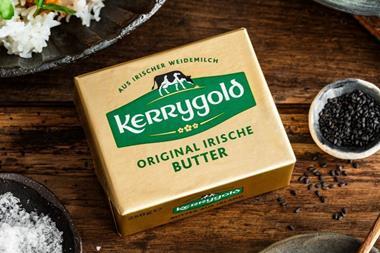What a difference a year makes. Until recently, dairy processors under pressure from the mults’ milk price war - which ripped nearly £170m out of the fresh liquid milk market in 2011 - could take solace in the fact that at least cream prices were strong.
Not any more. The UK wholesale price of cream fell last month to £1,230, down 15.2% on December, and is currently down 16.3% year-on-year [DairyCo].
It is not unusual for cream prices to fall around Christmas and New Year, but this year prices have started to fall “earlier and sharper than usual”, according to an industry source. DairyCo describes the situation in the cream market as “fragile”.
Lower cream prices will put dairy processors decidedly on edge. “Cream is such a big part of their income and it’s really helped them survive the price wars in liquid milk,” says one dairy source.
Robert Wiseman Dairies flagged up the impact of falling cream prices in its latest interim management statement, warning that profits might suffer if cream prices remained low and it could not find a way to compensate by reducing its milk price to farmers or raising the price of milk. Wiseman is especially exposed to falling prices because, unlike rivals, it does not have a large portfolio of value-added products such as butter to use surplus cream in.
Although wholesale cream prices have fallen, this has not yet translated into lower cream prices for consumers. In fact, the price of a 250ml pot of own-label double cream has actually increased by 16.3% year-on-year in three of the four major mults.
In January 2011, Tesco and Sainsbury’s were charging 90p, and Asda 86p. However, Asda is now charging £1 and Tesco and Sainsbury’s both £1.05. For a 125ml pot, prices have gone up by as much as 20.4% at the same retailers. All three were charging 54p in January 2011, but Tesco and Sainsbury’s are now charging 65p and Asda 62p [BrandView.co.uk].
Commodity prices
Price rises have been the order of the day in the commodities markets recently - so much so that our tracker of 40 core commodities identified only four fallers this week.
Cocoa features prominently, with both butter and powder showing double-digit monthly increases, following concerns over dry weather in Ivory Coast and a strike in Nigeria.
At the other end of the scale, oats have recorded a rare drop in prices over the past month, down 0.5%, but are still up by 3.6% on 2011.
Although many raw materials have risen in price month-on-month, the price trend for most remains downward year-on-year. Of our 10 picks this week, just three - tea, oats and Thai rice - are more expensive than in 2011.
Julia Glotz



















1 Readers' comment